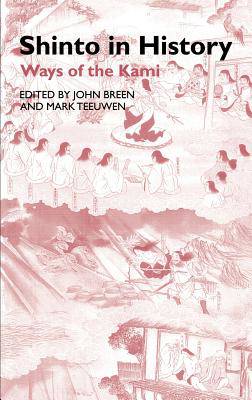
- Afhalen na 1 uur in een winkel met voorraad
- Gratis thuislevering in België vanaf € 30
- Ruim aanbod met 7 miljoen producten
- Afhalen na 1 uur in een winkel met voorraad
- Gratis thuislevering in België vanaf € 30
- Ruim aanbod met 7 miljoen producten
Zoeken
Omschrijving
This is the only book to date offering a critical overview of Shinto from early times to the modern era, and evaluating Shinto's place in Japanese religious culture. In recent years, a few books on medieval Shinto have appeared, but none has attempted to depict the broader picture, to examine critically Shinto's origins and its subsequent development through the medieval, pre-modern and modern periods. The essays in this book address such key topics as Shinto and Daoism in early Japan, Shinto and the natural environment, Shinto and state ritual in early Japan, Shinto and Buddhism in medieval Japan, and Shinto and the state in the modern period. All of the essays highlight the dynamic nature of Shinto and shrine history by focusing on the three-way relationship, often fraught, between local shrine cults, Shinto agendas and Buddhism.
Specificaties
Betrokkenen
- Auteur(s):
- Uitgeverij:
Inhoud
- Aantal bladzijden:
- 368
- Taal:
- Engels
- Reeks:
Eigenschappen
- Productcode (EAN):
- 9780700711703
- Verschijningsdatum:
- 3/07/2000
- Uitvoering:
- Hardcover
- Formaat:
- Genaaid
- Afmetingen:
- 156 mm x 234 mm
- Gewicht:
- 712 g

Alleen bij Standaard Boekhandel
+ 885 punten op je klantenkaart van Standaard Boekhandel
Beoordelingen
We publiceren alleen reviews die voldoen aan de voorwaarden voor reviews. Bekijk onze voorwaarden voor reviews.











